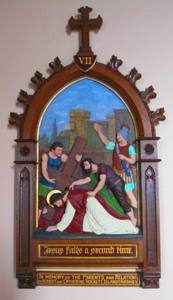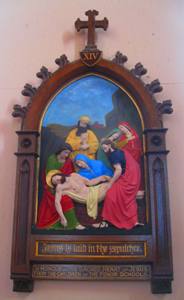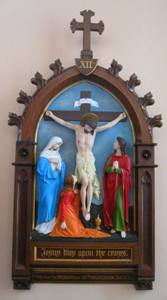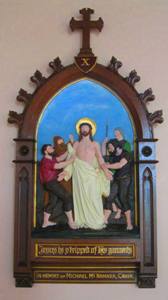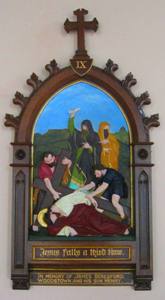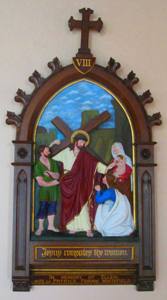Historical Dunhill Landmarks
by the late Frank Power
from the book “Historical Dunhill Landmarks (1988).”
Dunhill Church and Village
This church stands in a prominent position above the village. It was erected by Fr. Dowley P.P. in 1884. It is the third church to have been built on this site. In 1798 the first structure was erected after an old building in the townland of Shanaclune was abandoned. The second church was built in 1820. The contractor’s fee for the building of the new church in 1884 was £2,276. A building fund was set up to finance the project. The main source for this was the local population. Every parish priest and curate in the diocese gave £2 and £1 each, respectively. Many items were donated, including seats, stations of the cross, windows, altars, and statues. The main altar cost £100 and the two side altars cost £50 each. It was decided not to demolish the old belfry, which was built in 1820, and this is still used for occasions such as funerals.
The people of the parish celebrated the centenary of the church in 1984. In the years preceding this, extensive renovations were carried out under the direction of Fr. G. Purcell P.P. The parochial house at Ballyphilip was built shortly before the new church, in c.1881.
The village is typical of the many similar ones throughout the country. It comprises a primary school, a parish hall, and Harney’s public house and shop. The parish hall was built about 1850 and was a primary school until 1945 when the present school was opened. Two new classrooms were added to this in 1988. Adjoining the parish hall are squash courts which are the property of Dunhill Squash Club. This club was founded in the early 1970s and was one of the first rural squash clubs to be formed in the country. Of the four thatched dwellings which stood in the village for a number of generations, two still exist and are still occupied. In 1967, Dunhill Village was the focus of attention of many international media people when the widow of the late President Kennedy attended a play at the parish hall.
Ballyleen Mass Rock
This is situated on the farm of Geoff Cheasty and survives from the penal days of the 17th and 18th centuries. Mass was celebrated in this secluded place as priests were forbidden to use their churches following the English government’s attempt to replace the Catholic religion with the Protestant religion. The Mass rock stands on high ground from where a clear view of the surrounding countryside could be got. It is surrounded by a small enclosed area measuring about thirty yards by twenty yards.
The Medieval Church Ruin
Three hundred yards west from Dunhill Castle stands the ruin of a medieval Catholic church and graveyard. This church dates from the 14th century and was destroyed by the Cromwellian forces at the time of the attack on Dunhill Castle. Portions of the eastern and western walls are still to be seen. In the western wall stands an arched doorway. A large section of the stone stairway which led to the choir can be seen on the ground near the arched doorway. This building measured sixty feet by twenty-four feet, and the choir measured twenty-seven feet by eighteen feet.
In the cemetery stand some tombstones which date from the 18th century. A Mass path once ran northwards from this place. One of the earliest references to a church at Dunhill is in the British Government’s Calendar of Documents relating to Ireland for the years 1302 to 1307. A record of taxation shows Dunhill Church and Vicarage (the area which the church served) valued at £101 13s 8d. Out of this value, 21s 4½d was due in tax.

